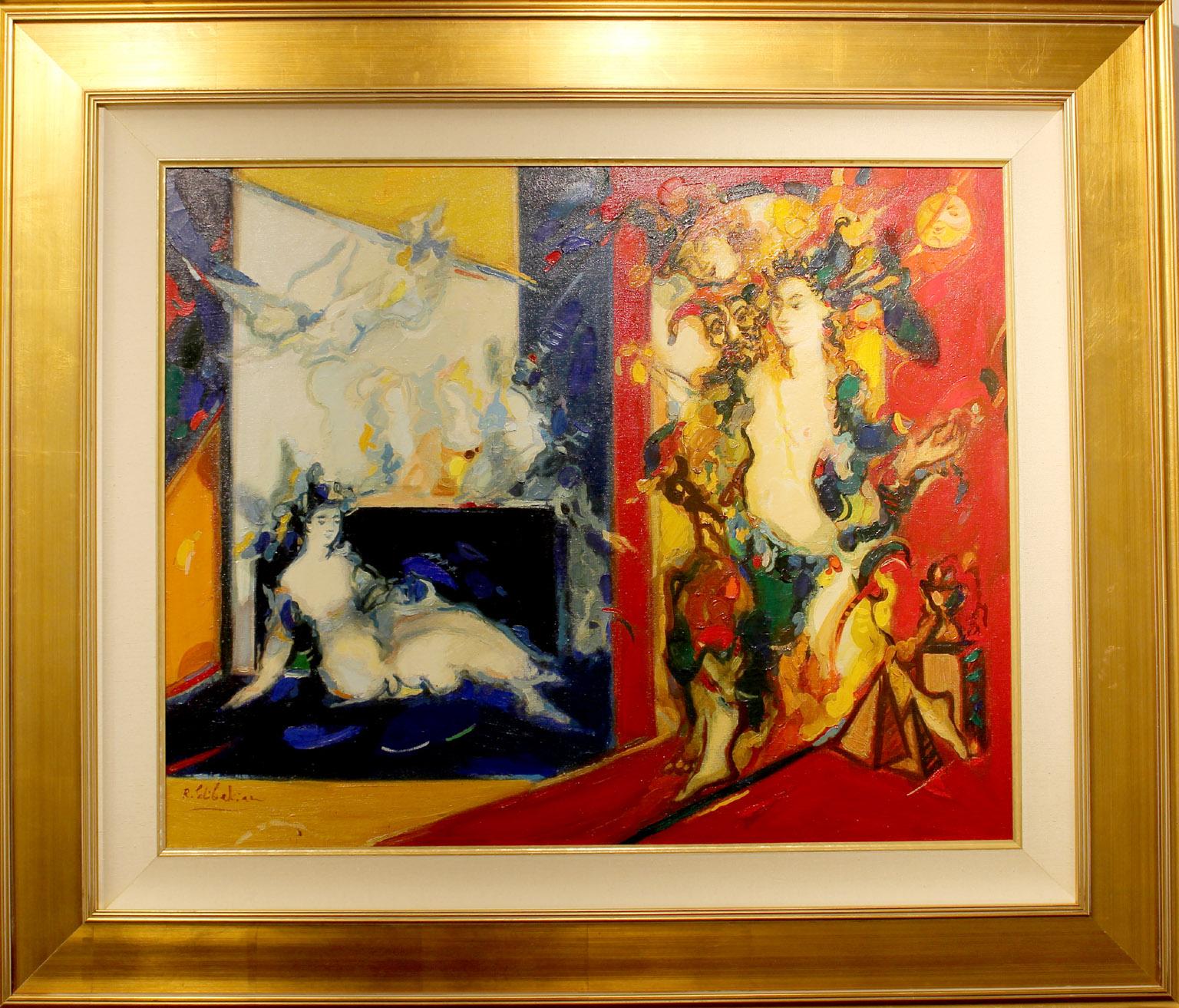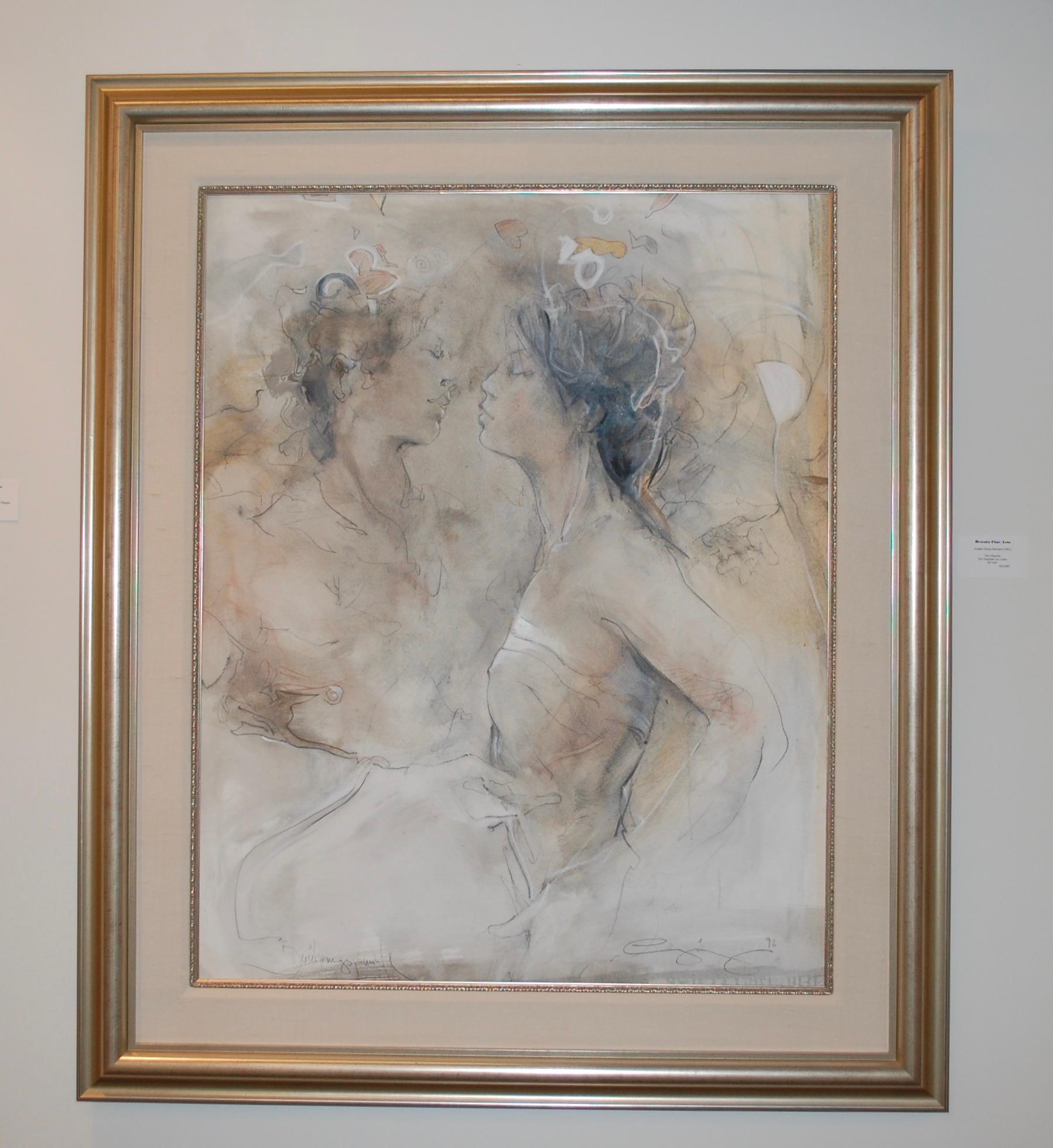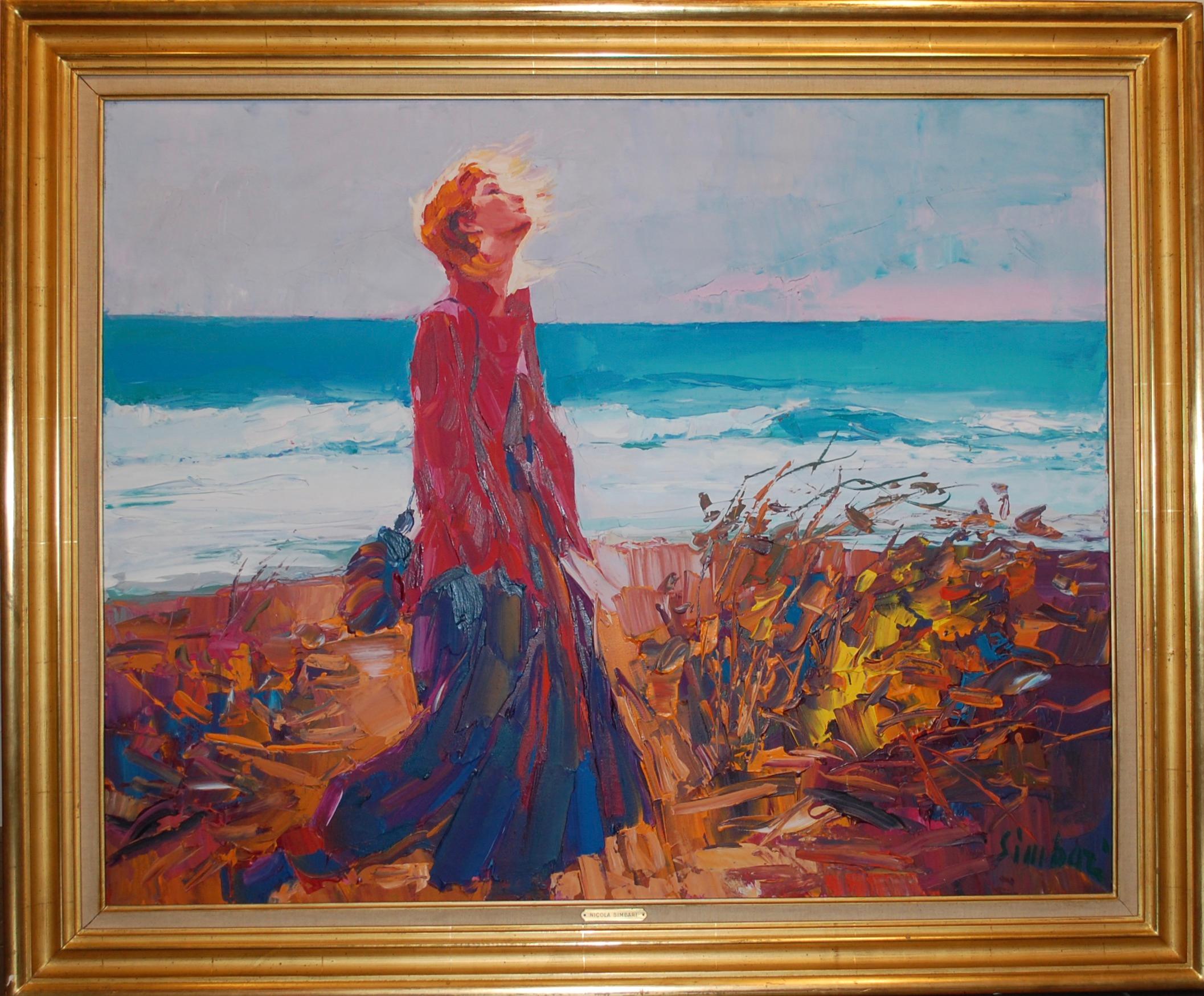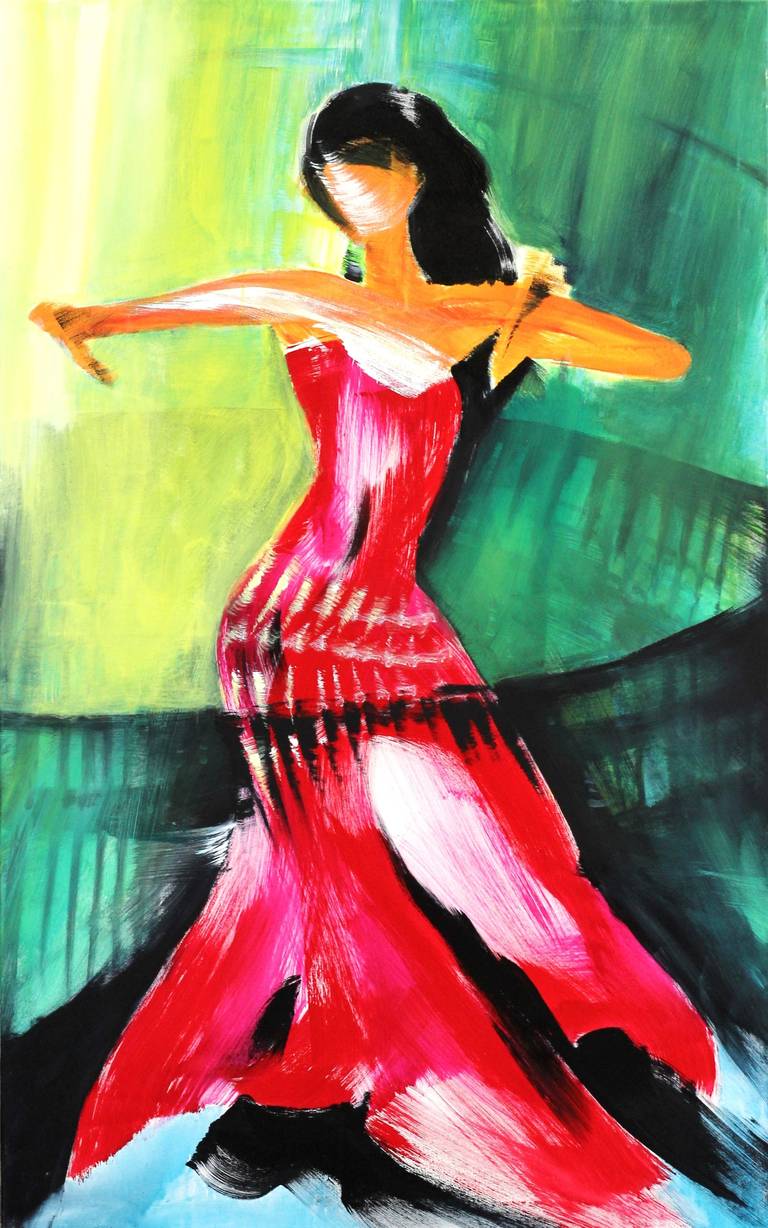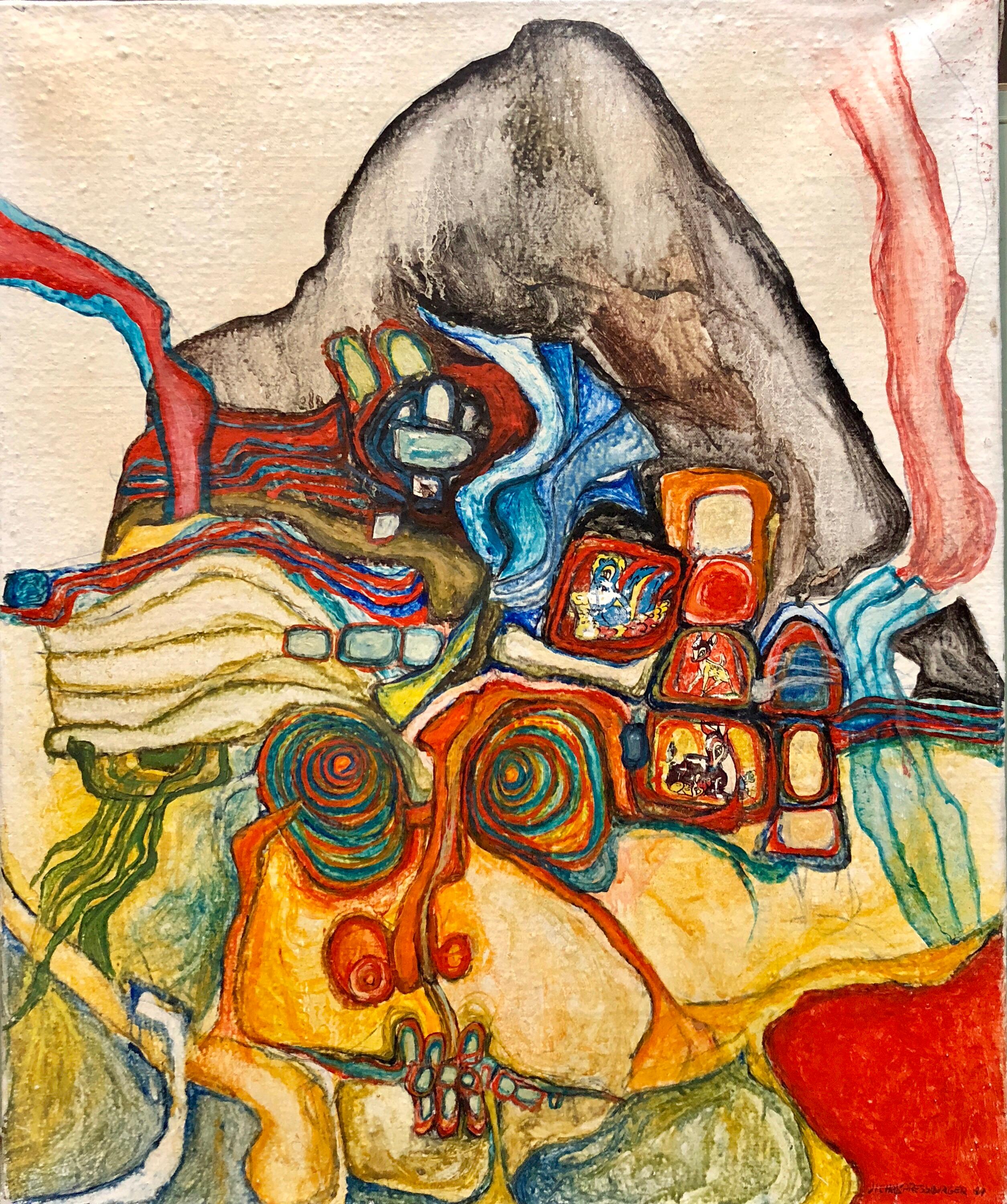Items Similar to Untitled Biomorphic
Video Loading
Want more images or videos?
Request additional images or videos from the seller
1 of 9
Melville PriceUntitled Biomorphicc. 1944-1945
c. 1944-1945
About the Item
Estate stamped and accompanied by a COA from the estate.
The history of the New York School painters is still being written, but Price earned a well-deserved place from the beginning. Price was one of the youngest of the first generation Abstract Expressionist circle of painters working in New York after WWII. Though only in his late twenties he began exhibiting in 1948 in New York at Hugo, Bodely, Iolas and Egan galleries. In a 1949, showing at Peridot galleries, Price was hailed for his breakthrough "Maze Series." A complex interweaving of organic shapes, automatic in nature and sometimes resembling bones or body parts, the "Maze" paintings exuded a pulsating energy that brought him critical acclaim. He received rave reviews in Art Digest, the New York Times and the New York Tribune.
Price's earliest work was biomorphic or surrealist in nature, influenced by the automatism of Andre Breton and his school. By 1946, his work began to move away from this style to an all-over, decentralized style which became the "Maze" works and ultimately AbEx works which saw their culmination in the "Black Warrior" series.
When the "Club" was started, Price was invited to join and forged close relationships with other members of the New York School including Fritz Bultman, Giorgio Cavallon, Weldon Kees, Bradley Walker Tomlin, Robert Motherwell, Milton Resnick and Conrad Marca-Relli. In 1951 he was honored to be included in the 9th St. Show, the premier event of the Abstract Expressionist movement. He was close friends with Franz Kline throughout his life.
Price died young, at 50 in 1970. After his death Price was honored with retrospective exhibitions at the University of Alabama, the Speed Museum and the Corcoran Gallery. He is represented in numerous private and public collections including the Art Institute of Chicago, the Corcoran Museum of Art, the Los Angeles Museum County Museum of Art and the Milwaukee Art Museum
- Creator:Melville Price (1920-1970, American)
- Creation Year:c. 1944-1945
- Dimensions:Height: 24 in (60.96 cm)Width: 18 in (45.72 cm)
- Medium:
- Movement & Style:
- Period:
- Condition:Beautifully framed in a double floater frame.
- Gallery Location:Lawrence, NY
- Reference Number:1stDibs: LU149729603532
About the Seller
5.0
Vetted Seller
These experienced sellers undergo a comprehensive evaluation by our team of in-house experts.
Established in 2011
1stDibs seller since 2021
22 sales on 1stDibs
Typical response time: 3 hours
- ShippingRetrieving quote...Ships From: Lawrence, NY
- Return PolicyA return for this item may be initiated within 3 days of delivery.
More From This SellerView All
- Chinese Shop Window, Lower East SideBy Gandy BrodieLocated in Lawrence, NYGouache and pastel on paper An artist whose work was simultaneously figurative and abstract, Brodie was praised as "one of the best painters of his generation" by art historian, Mey...Category
1960s Expressionist Abstract Paintings
MaterialsOil Pastel, Gouache
- Untitled (The Orange Boat)By Gandy BrodieLocated in Lawrence, NYNote: oil pastel on paper Gandy Brodie (American, 1924-1975) studied dance and jazz before teaching himself to paint, inspired by the paintings of Van G...Category
1950s Expressionist Abstract Paintings
MaterialsOil Pastel
- Santa Maria Novella FirenzeBy Gandy BrodieLocated in Lawrence, NYNote: oil pastel on paper Gandy Brodie (American, 1924-1975) studied dance and jazz before teaching himself to paint, inspired by the paintings of Van G...Category
1950s Expressionist Abstract Paintings
MaterialsOil Pastel
- UntitledBy Charles CajoriLocated in Lawrence, NYOil and gouache on thick paper Cajori was an important second generation abstract expressionist painter. In 1952, he founded, along with Fred Mitchell, Lois Dodd...Category
1980s Abstract Expressionist Abstract Paintings
MaterialsOil
- Untitled (Falling Tower)By Robert S. NeumanLocated in Lawrence, NYOil on linen Neuman's work assimilated a wide variety of influences, including Bay Area Abstraction, the New York School and European Art Informel. Not bad for a young man raised in the rural mining town of Kellogg, Idaho! Arriving in San Francisco in 1947, at age 21, Neuman would first be exposed to the work of Richard Diebenkorn, Sam Francis, Clyfford Still...Category
1960s Abstract Expressionist Abstract Paintings
MaterialsOil
- MatanzaBy Harriette JoffeLocated in Lawrence, NYSometimes a single work of art sums up where an artist has gotten to; sometimes it prefigures to where an artist is headed. Matanza, a masterful work by Harriette Joffe (1935-2018), ...Category
1990s Abstract Expressionist Figurative Paintings
MaterialsOil
You May Also Like
- Spectacle, year 2002, 26"x32" oil on canvas, framed size 36x42 in.By Robert ElibekyanLocated in La Canada Flintridge, CAThe painting sizes are 26x32 in. with framed sizes are 36x42 inches. The composition from Mysterious Theater series, Robert Elibekian specialized in ...Category
2010s Expressionist Abstract Paintings
MaterialsOil
- Giulia (The Good Mother)Located in Santa Monica, CAOil on CanvasCategory
21st Century and Contemporary Expressionist Figurative Paintings
MaterialsOil
- Two Figures Expressionist Oil on CanvasBy Jürgen GörgLocated in Delray Beach, FLTwo Figures oil, graphite on linen canvas 40x30 framed. Jurgen Gorg was born in 1951 in, Dernbach Germany. His formative years were spent in Koblentz, before moving to Maintz to s...Category
1980s Expressionist Figurative Paintings
MaterialsLinen, Oil, Graphite
- Walking By The SeaBy Nicola SimbariLocated in Delray Beach, FLWalking By The Sea. Nicola Simbari was born in Italy and grow up in Rome. He studied at the Accademia di Belle Arti di Roma, and in the 1940s he began devoting himself to painting in a studio at Via del Babuino in central Rome. Simbari's early exposure to the architectural world had a lasting impression on his art, as he incorporated geometric forms and architectural structures into almost all of his paintings. He began to develop a distinct style stemming from impressions of life, nature, and the Mediterranean...Category
1980s Expressionist Abstract Paintings
MaterialsCotton Canvas, Oil
- Dancer in Red - Large Colorful Expressive Figurative Oil Painting on CanvasBy Bettina MauelLocated in Los Angeles, CABettina Mauel expresses vitality and sensuality in her abstract and figurative paintings. “I paint what I experience,” she articulates. “This includes landscapes, dancers, and peop...Category
21st Century and Contemporary Expressionist Abstract Paintings
MaterialsCanvas, Oil
- French Jewish Post Holocaust Abstract Painting Manner of Hundertwasser Art BrutBy Jichak PressburgerLocated in Surfside, FLJichak Pressburger, Painter. b. 1933, Bratislava, Czechoslovakia. A concentration camp survivior. Came to Israel aboard the ship, "The Exodus". 1964 Went to Paris. In 1979 Returned as new immigrant. Education Tel Aviv University, B.A. in art, with Marcel Janco and Isidor Ascheim at Avni art school. Beaux Arts, Paris with Professor Coutaud. Itzchak Pressburger Stays in Paris from 1963 – 1979, Resident of the “Cité des Arts” 1969-1972. Lives and works in Jerusalem since 1979. One-Man Exhibitions 1963 Gallery Dugit, Tel-Aviv 1968 Cultural Center Enkhuizen, Netherlands 1968 Gallery Zunini, Paris (chosen by the art critic of « Opus : Jean-Jacques Lévèque) 1970 Gallery Zunini, Paris 1973 Gallery Maitre Albert, Paris. Cultural Center Verfeil sur Seye, France 1974 Gallery Maitre Albert, Paris 1976 Gallery Mundo, Barcelone 1980 Artists’ House, Jerusalem 1981 Gallery Alain Gerard, Paris Group Exhibitions 1966 Rathaus Charlottenburg, Berlin. (The first show of Israeli painters in Germany Artists Center of Silvarouvres, Nantes, Ffance XXXth Salon of Finances at “l’Hotel des Monnaies”, Paris 1969 Maison de Culture, Le Havre, France 1968 Gallery Zunini, Paris (chosen by the art critic of « Opus : Jean-Jacques Lévèque) Salon « Grands et Jeunes d’Aujourd’hui », Paris Museum of Fine Arts, Nantes, France Cultural Center Vitry, France Gallery Il Giorno, Milan Cité des Arts, Paris 1972 Salon “Grands et Jeunes d’Aujourd’hui”, Paris Salon de Mai, Paris 1973 Städtische Galerie, Siegen, Germany 1974 Jewish Cultural Center, Paris Publicis, Paris 1975 Réalitiés Nouvelles, Paris 1976 Salon de Mai, Paris 1977 “Perspectives Israeliennes”, Grand Palais, Paris 1981 Salon Alain Gerard, Paris 1984 Artists’ House, Jerusalem Publication 1990 Haggadah Yom Kippour (Hebrew/French) Abraham Bliah (private edition), Paris Acquisitions 1968 The City of Paris 1972 The State of France The Yitzchak Pressburger artist was born in Bratislava – known for centuries by its German name of Pressburg – but the outbreak of World War II found him and his family in Prague. His father realized they had to escape from the Nazi occupiers and tried to get the family across the border into Hungary. However, they were caught near the crossing point, arrested and incarcerated overnight at the nearby railway station. The Czechs put them on a train to Hungary early the next morning. That was their first miracle in their quest for survival. They survived with relative ease until late 1943, when the father was taken away to a forced labor camp. He subsequently died in a death march. Things became even more precarious in early 1944, when the Holocaust made its full-blown presence felt in Hungary. “It wasn’t the Germans, it was the Hungarian Nazis who did the dirty work,” Pressburger points out. The family lived in so-called “safe houses” that were protected by Switzerland, Finland and Sweden. The havens were dismantled in late 1944, and the Pressburgers moved into one of the two Jewish ghettos in Budapest. The Nazis had found two houses with Jews, including the one where we had been, and took them all out and shot them next to the Danube. Today there is a monument by the river [called Shoes on the Danube Bank]. We should have been with the Jews who were killed by the river,” he says. After the war, Pressburger and his siblings were farmed out to various orphanages run by the Jewish Agency, and things took a decidedly better turn. “We finally had food to eat,” he recalls. “After a while we were put on trains that were protected by the Jewish Brigade [of the British Army], and we were sent to Austria, and then to Germany.” “My uncle was a famous artist, and I learned a lot from him,” he says. While in Germany, Pressburger also took some lessons with a local artist. His mother managed to get him and two of his siblings berths on the Exodus, which set sail from Marseilles for Palestine in July 1947. Pressburger was 13 at the time and clearly recalls the aborted attempt to get to the Promised Land. “It was so crowded on the boat. This was a ship that was made to ply rivers in the United States, with a few hundred people on board, and we had over 4,500 passengers crammed in.” As we know, the British prevented the Exodus from docking in Palestine, and the passengers were shipped – in three far more seaworthy vessels – back to France. After the French government refused to cooperate with the British, Pressburger and the others found themselves back in Germany. The teenager eventually made it here in 1948, just one month before the Declaration of Independence. After a short furlough in Tel Aviv, during the first lull in the fighting in the War of Independence, he moved to Kibbutz Kfar Ruppin, where he worked in the cowshed. All the while he continued feverishly drawing and honing his artistic skills, which he says came in handy when he joined the IDF. After completing his military service, which included a spell as one of the founding members of the Flotilla 13 naval commando unit, he worked in Sdom for a while at the Dead Sea Works before starting his formal arts training in earnest. I was in the first group of students at the Avni Institute [in Tel Aviv],” he says. “There was quite a famous bunch of students and teachers like Moshe Mokadi and Isidore Ascheim and Aaron Giladi.” In such illustrious company, one might have thought Pressburger was set to unleash his burgeoning talents on art connoisseurs across the globe, but it was a while before that happened. Pressburger arrived in the French capital in 1964 and spent close to 15 years there, with a short interlude in Germany, before returning to Israel. His time in Paris was a professionally rewarding period of his life, and he also found love. “[Avni Institute teacher] Yochanan Simon gave me the name and address of a French-Israeli family in Paris, but when I got to the house, a young woman opened the door and told me the family was on vacation in Israel,” he explains. Despite missing his expected hosts’ welcome, he and the German-born young lady who greeted him soon fell for each other, and romance quickly led to wedding bells. By all accounts, Pressburger did well in Europe. He secured a rare three-year berth at Cité Internationale des Arts, where artists are normally provided with accommodation and studio space for between two months and a year. He was also accepted to the prestigious Beaux Arts academy of fine arts, mounted solo exhibitions, and took part in group shows all over Europe. One of these last was a group exhibition at Rathaus Charlottenburg in Berlin in 1966 – the first exhibition of Israeli artists in Germany after the Holocaust. When he arrived in Berlin, the lineup for the Israeli show was already signed and sealed, but somehow his work came to the attention of the German culture minister, who arranged for him to join. The Pressburgers’ year-long sojourn came to an abrupt end following an encounter he had one day while walking through the crowded Berlin streets...Category
1960s Expressionist Abstract Paintings
MaterialsCanvas, Oil
